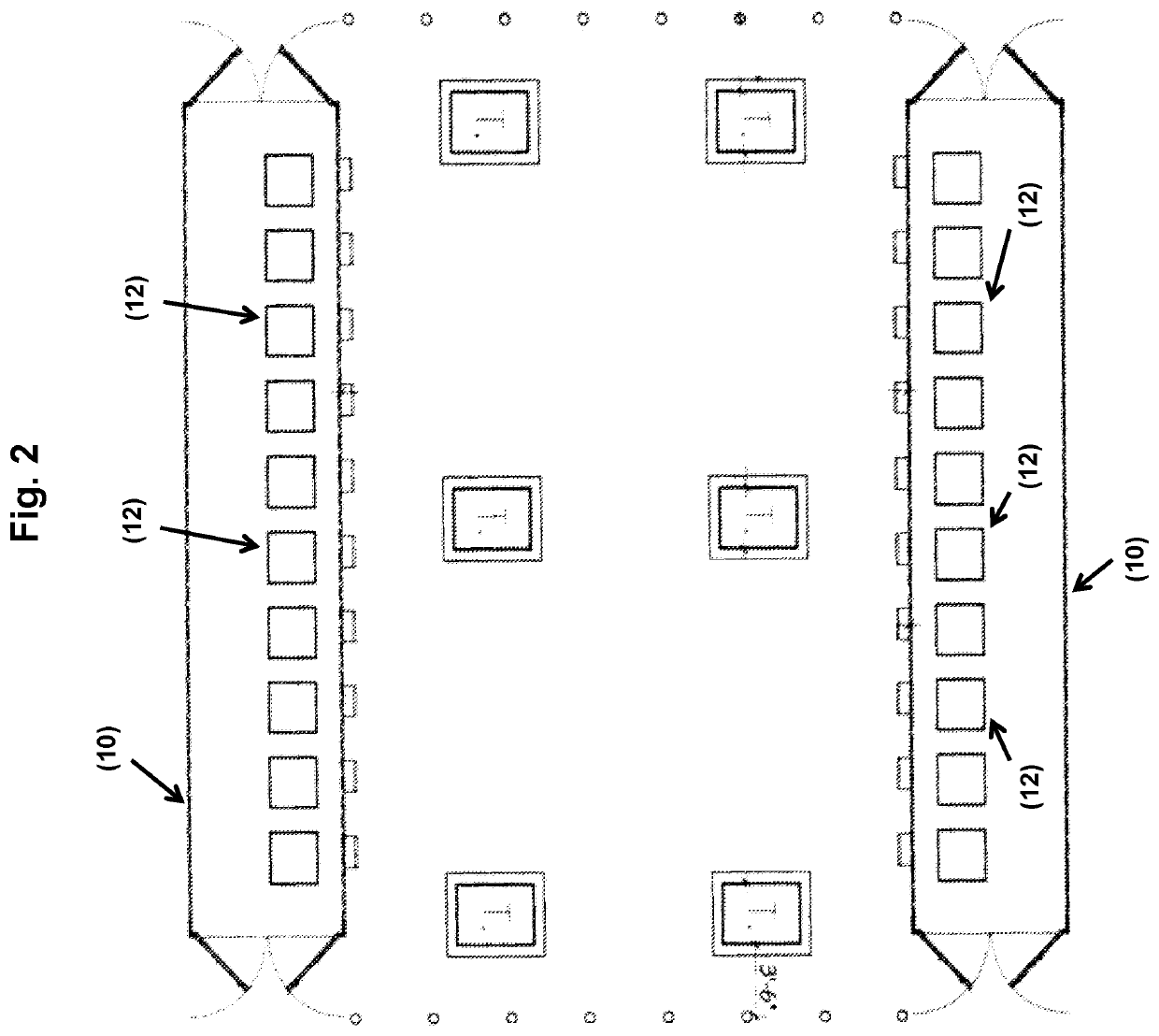[0006]We have discovered that inexpensive, clean (non-polluting) electricity from renewable energy sources can be generated from low temperature (typically 140 degrees F. up to the boiling point of water) geothermal wells or other low temperature geothermal resources. This electricity in turn can be used for on-site electronic signals processing, thereby eliminating the need to put the electricity generated into the conventional electric power grid or otherwise transport it over long distances. Low temperature geothermal wells or other low temperature geothermal resources (usually less than 210° F.) have typically been limited to uses such as space heating and domestic water heating for residential, greenhouse, or industrial buildings, provided a need for these uses exists within a reasonable proximity. In other words, low temperature geothermal resources have historically had very limited utility and low economic value. Our on-site power generation with electronic signals processing facilities is a more valuable use of the energy available from low temperature geothermal sources. Low temperature geothermal resources can be embodied as a warm water aquifer, or warm body of water including but not limited to: hot springs, boiling lakes and hydrothermal vents located on land and hydrothermal vents submerged in the ocean. Our electronic signals processing facilities may be located in a remote location which has a low temperature geothermal resource. Our on-site power generation with electronic signals processing facility includes a low temperature geothermal resource utilized to generate electricity with a hydraulic heat engine. The hydraulic heat engine drives a hydraulic motor which turns a generator which generates electricity which is used to run computing equipment. Due to the low cost of internet connectivity over optical fiber and microwave frequencies it is feasible to locate the electronic signals processing facility in remote and rural areas. This method enables locating the facility remotely from the conventional electrical grid and thereby eliminates significant costs and constraints placed on conventional computing facilities. Rather than generating electrical power and transporting that power over long distances to a location where it can be used, instead, raw data and other items unrelated to data in need of processing is transmitted to the site of our facility and electrical power generated at the site is used on-site for computing and the resulting processed data is then transmitted to remote locations using conventional data transmission systems. This approach takes advantage of the fact that data transmission systems are considerably less costly and more efficient than power transmission systems. Our method makes low temperature geothermal resources, including those in remote and rural locations, viable for the high grade, high value use of electronic signals and some other specific types of processing.
[0008]Although there are other types of heat engines that are capable of generating electricity using water at temperatures similar to those available from low-heat geothermal water wells, they operate at considerably lower efficiencies and therefore produce higher cost electricity. Hence, low-heat geothermal water wells are considered to be economically stranded. Under federal law, when electricity generated from renewable sources including low heat geothermal resources is fed into the conventional power grid it must be purchased by local power companies at their “avoided cost” price. This “avoided cost” price is often too low to provide economic viability for other types of low-heat geothermal power plants. Our on-site power generation with electronic signals processing facility is economically viable because the heat engine is relatively efficient even with low temperature water, and the electrical power generated on-site is utilized on-site in its entirety by the electronic signals processing facility or other on-site non-computing related use. Due to the “avoided cost” price structure offered by power companies, substituting on-site computing or other services provides a more viable revenue stream.
[0009]One embodiment of a hydraulic heat engine combined with a generator such as that sold by Deluge, Inc. and covered under U.S. Pat. Nos. 5,899,067 and 5,916,140 may be used in our computing facility and method. Such combined units have low maintenance requirements, are not malodorous, and have a much lower noise level compared to conventional geothermal installations which rely on higher temperature water, such as those exemplified by Cal-Pine in Lake County, Calif. Our computing facility and method provide an on-site, direct use of renewable energy, at a significantly lower cost, which greatly reduces greenhouse gas emissions and reduces potentially disruptive electric grid burdens.
[0010]One embodiment of our electronic signals processing facility utilizes immersion cooling of the computing equipment. This method typically requires a footprint of one-tenth the square footage utilized by conventional computing facilities. With immersion cooling technologies our method utilizes a fraction of the electricity required by traditional computing facilities to cool the equipment, thereby allowing a cooling Power Utilization Efficiency (PUE) as low as 1.07 or lower. This is much lower than the typical PUE experienced with air cooled systems in traditional computing facilities. Our electronic signals processing facility requires less space and less electricity and therefore has a lower environmental impact.
 Login to View More
Login to View More  Login to View More
Login to View More 


